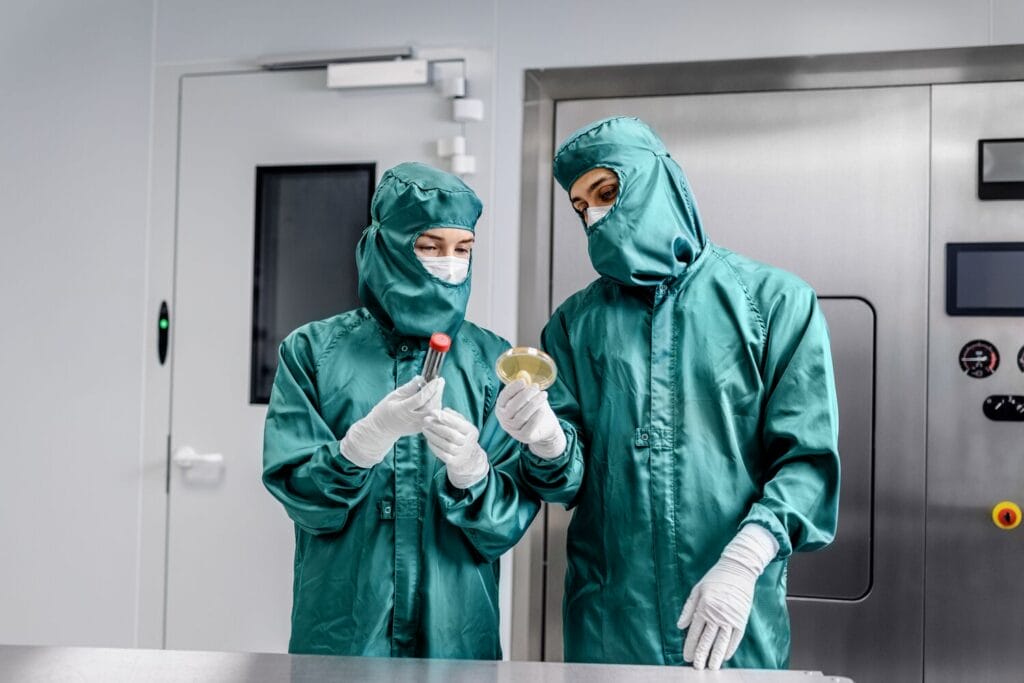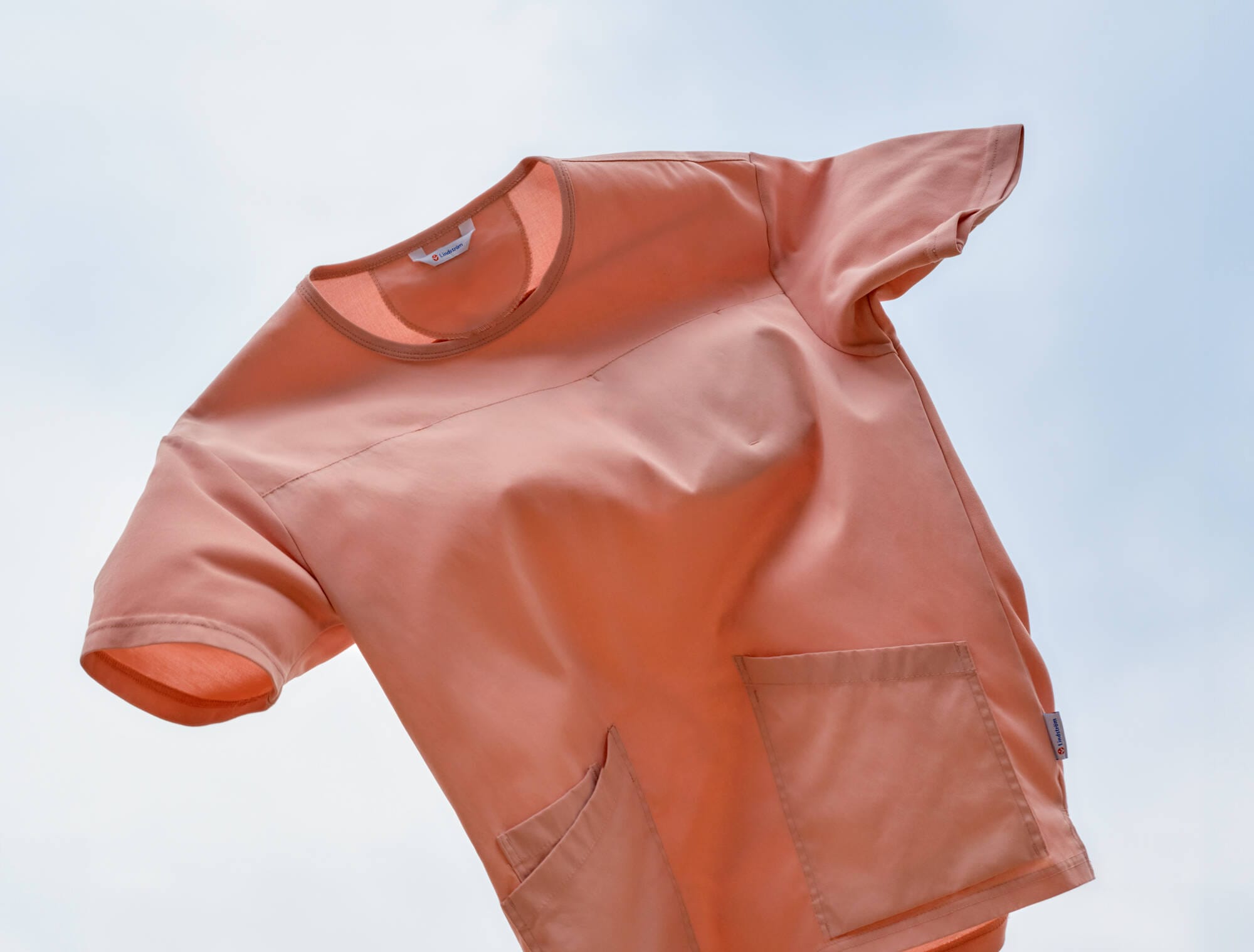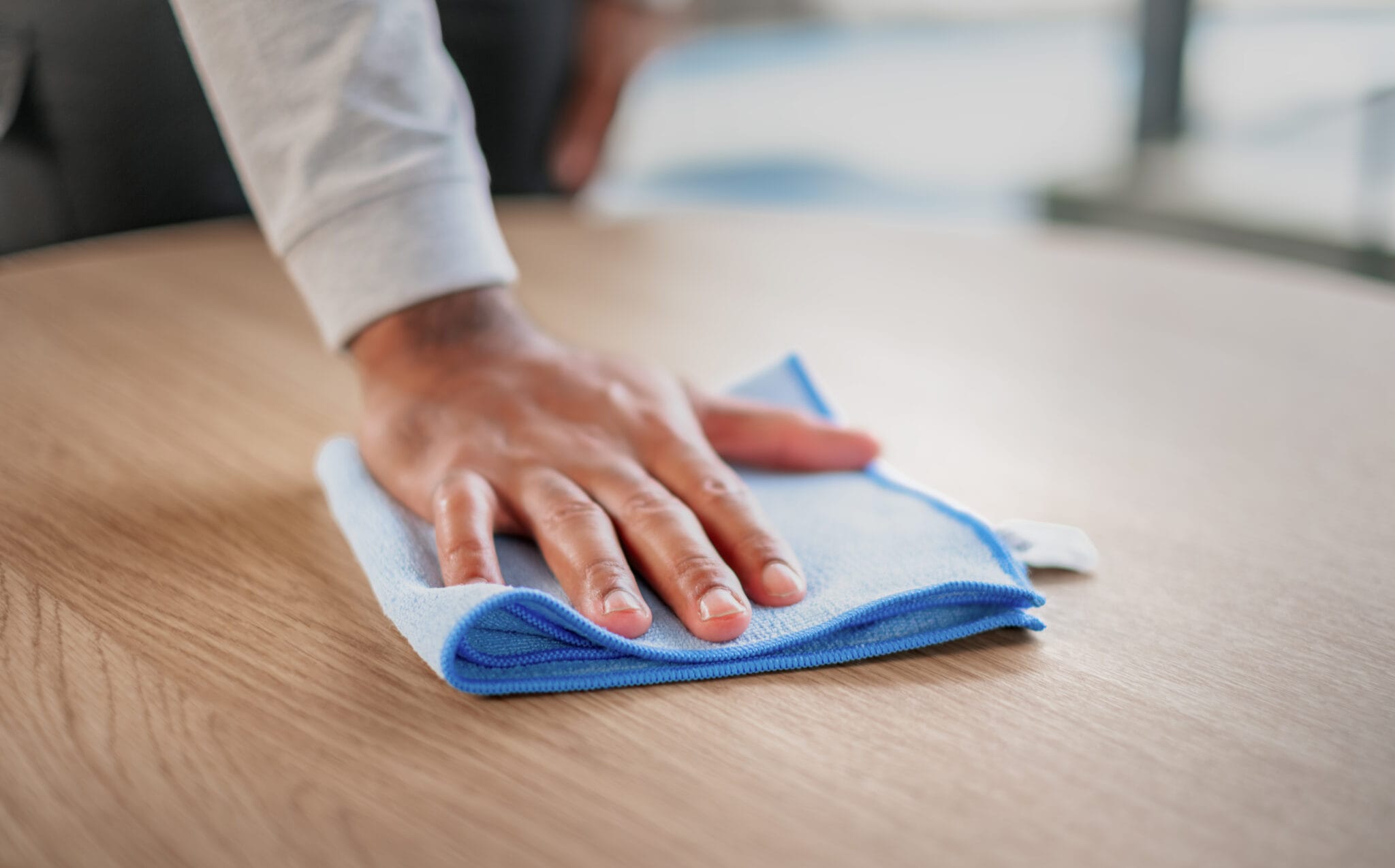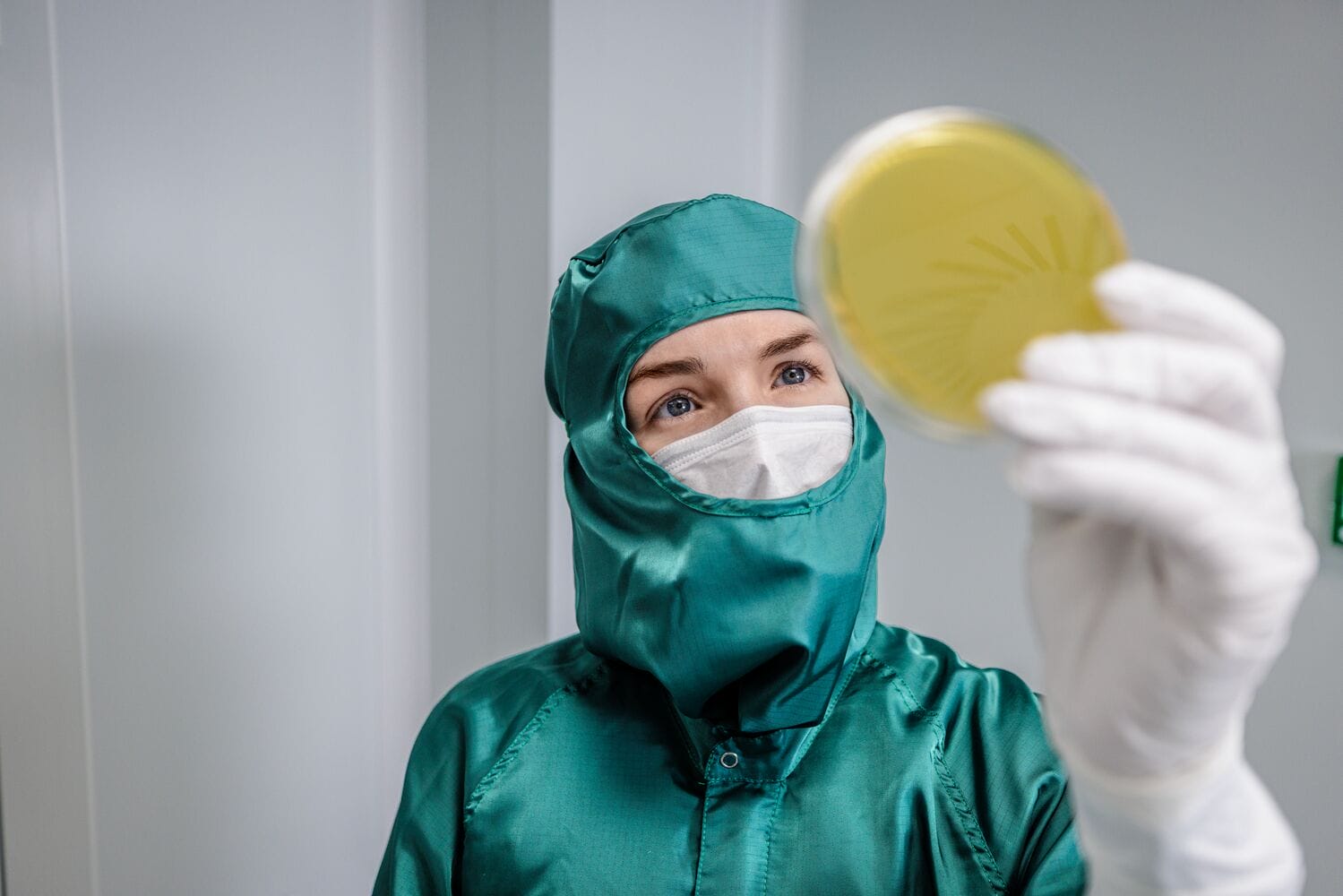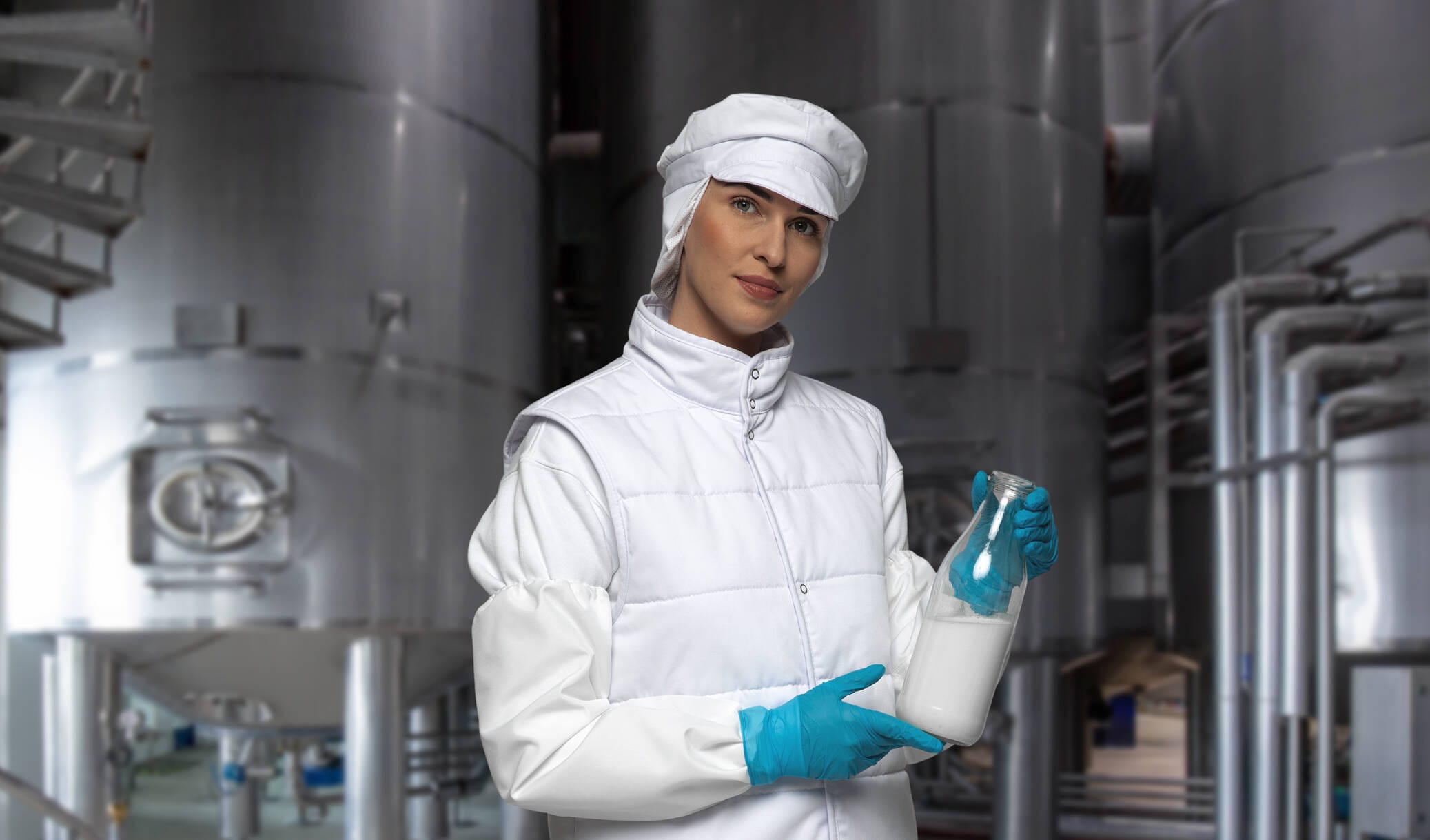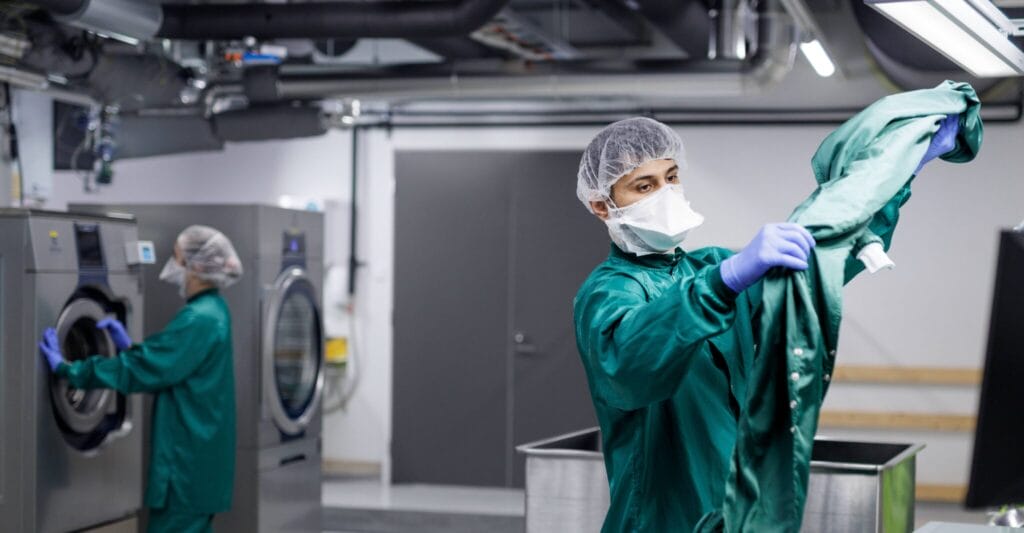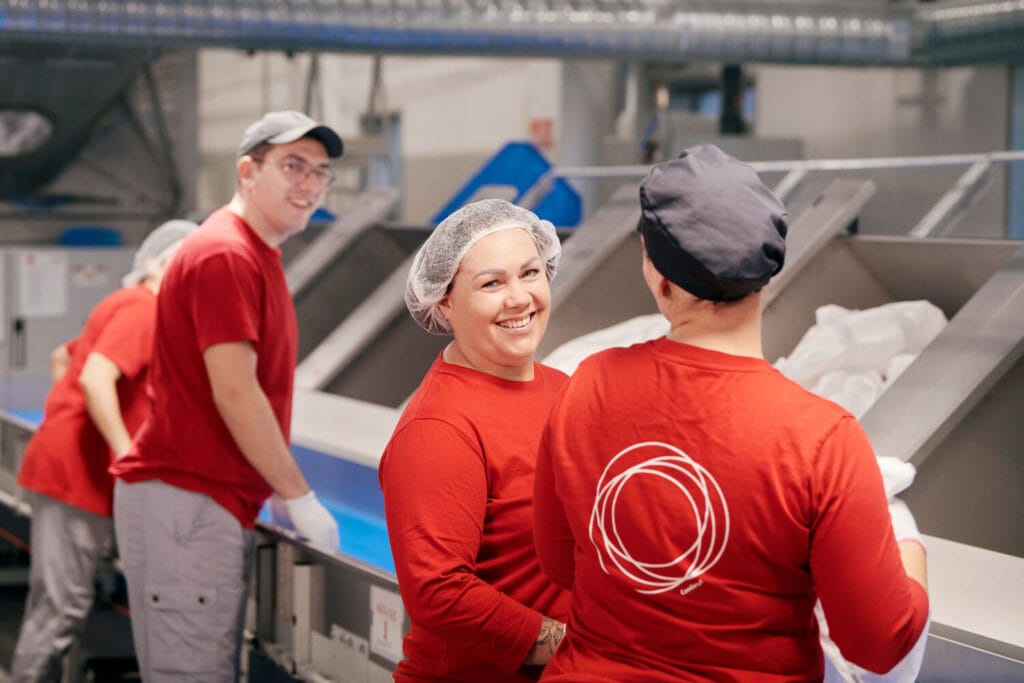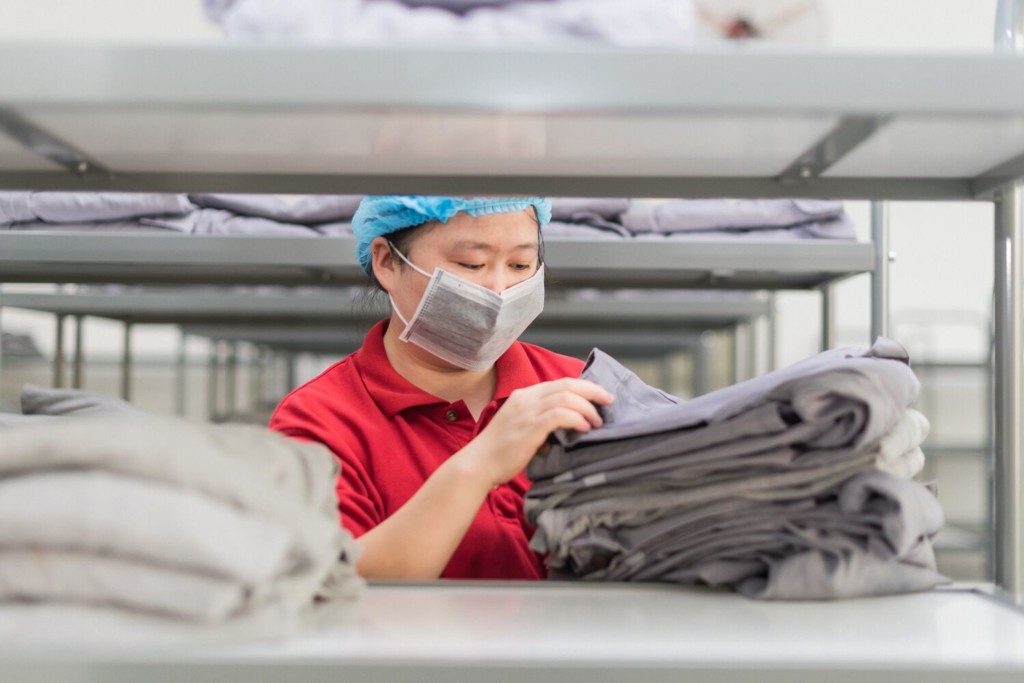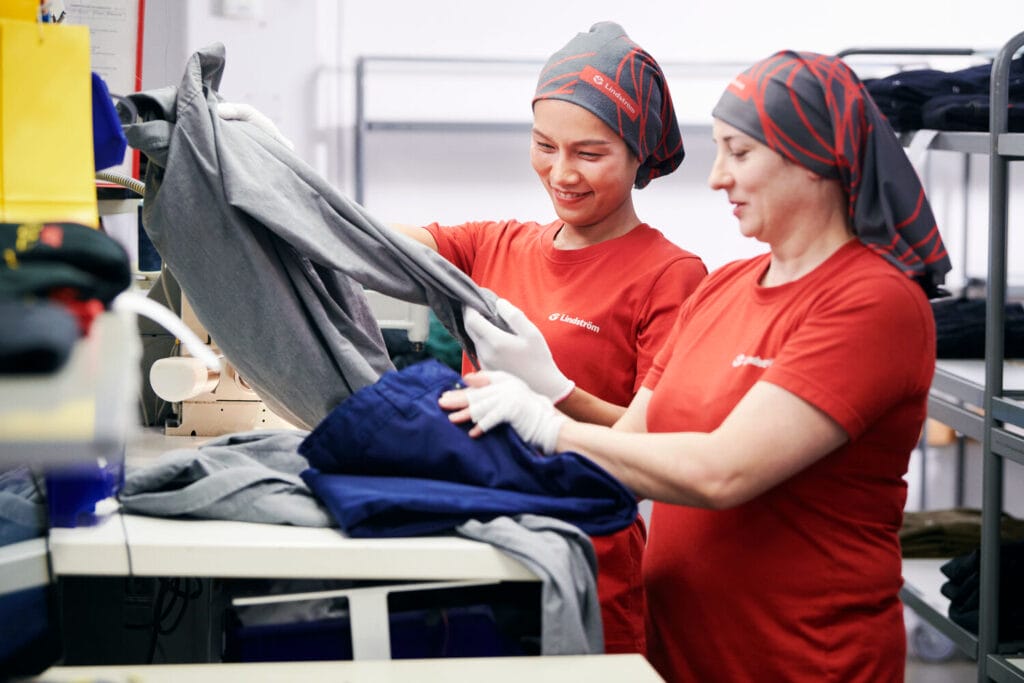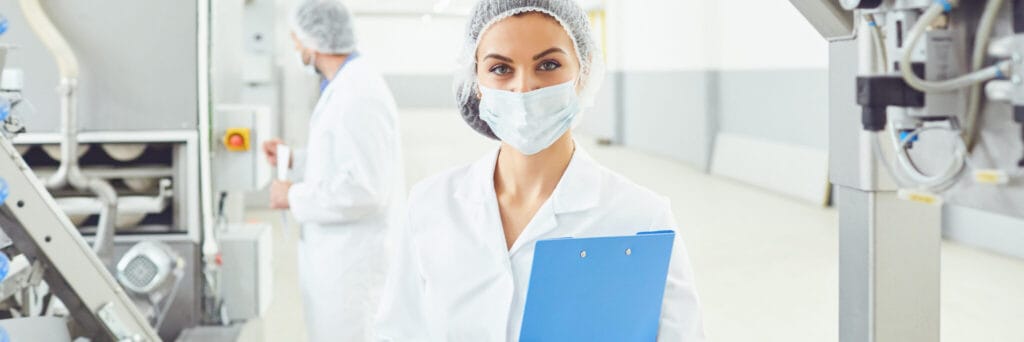Hygiene in textiles

Hygiene is more than soap and water
What does hygiene really mean? Is it simply about avoiding illness, something sterile, fewer microbes…
or something more?
In highly regulated industries like healthcare, pharmaceuticals and food production, hygiene goes beyond handwashing and surface cleaning. It’s about creating safe conditions, following correct processes, and controlling risks that are often invisible.
This page brings together practical insights for these high-stakes industries. Whether you’re managing operations, overseeing compliance, or working hands-on in care or production, you’ll find real-world guidance on workplace hygiene.
Hygiene matters everywhere
Personal hygiene – it starts with us
Maintaining hygiene in the workplace begins with individual habits. Clean hands, correct garment use and simple, repeatable routines can significantly reduce contamination risks.
Encourage regular handwashing, changing into clean garments daily, and using PPE correctly. Posters, visual reminders and brief onboarding training can go a long way toward maintaining consistent hygiene culture.
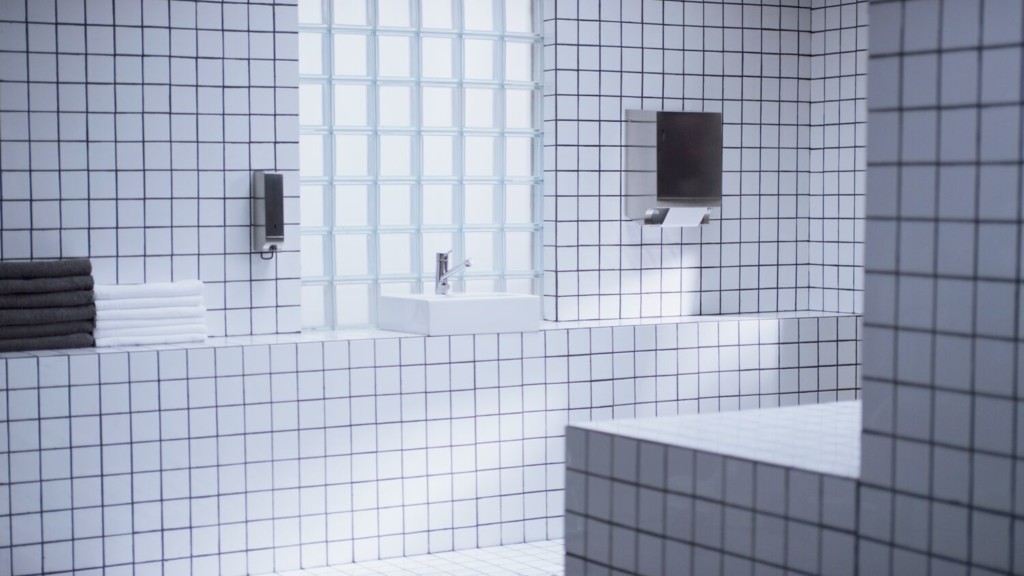
Research has shown that Lindström’s certified cotton towel roll service helps guarantee good hand hygiene that reduce virus spreading.

We all know coughs and sneezes spread diseases, but did you know your work clothes are also carrying germs and infectious viruses?
Supporting health, safety and trust
At its core, hygiene means putting practices in place to protect health and prevent the spread of disease. According to the World Health Organization, medical hygiene includes environmental cleaning, equipment sterilisation, hand hygiene, water safety and safe waste disposal.
In regulated industries, hygiene influences every aspect of daily operations: from clothing and workflows to storage and transportation. It’s a shared responsibility that needs clear roles, reliable systems and the right partners.
At Lindström, our role is to make hygiene easier to maintain across your business.
Hygiene is becoming a competitive advantage
In a world where regulatory scrutiny is increasing, public health risks are under the microscope, and consumer expectations are sky-high, hygiene has become a business-critical priority. Yet many businesses still rely on informal or inconsistent hygiene practices, like letting employees wash workwear at home. That’s a risk no quality-conscious organisation should take.
Failed audits and compliance
Non-compliance with hygiene standards can result in costly fines, corrective actions, and disruption to operations.
Product recalls and shutdowns
Contamination incidents may lead to product recalls, temporary shutdowns, and loss of customer trust.
Employee illness and lost workdays
-
Poor hygiene increases the risk of workplace illness, absenteeism, and reduced productivity.
-
Brand damage and customer loss
Hygiene failures can seriously damage your reputation, driving customers away.
The good news is that with the right practices and partners, you can avoid these risks.
Good hygiene protects not only your products and processes, but also the people who depend on you.
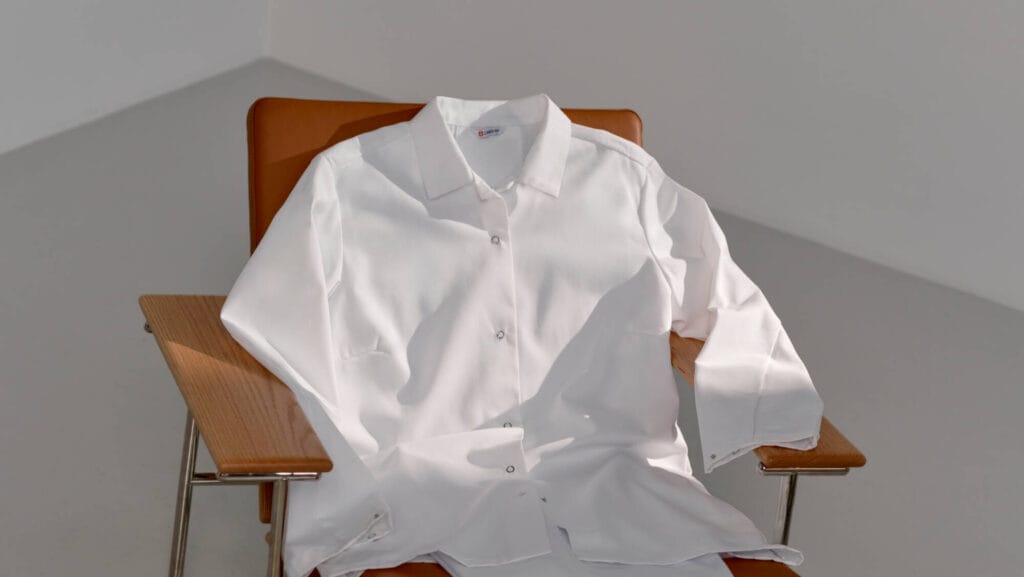
Learn how Workwear Alarm, our new add-on service, helps prevent garment loss and improve hygiene & safety compliance.
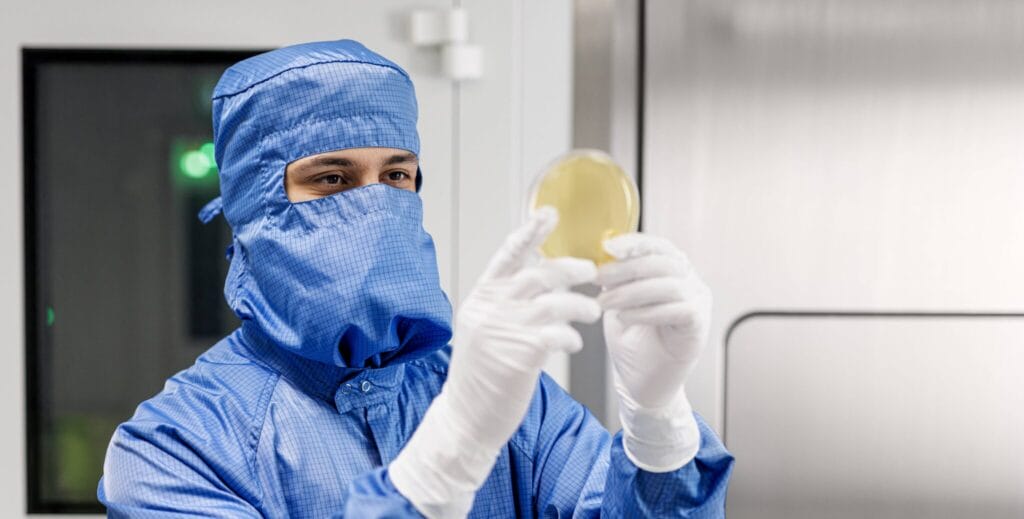
How long can virus live on clothes? That depends, but for several hours to maybe a day on clothes says infectious disease expert.
Washing workwear at home is not enough
When it comes to hygiene in regulated industries, even the best intentions can fall short. One of the most common risks we see is companies relying on employees to take their workwear home to wash.
At first glance, home laundering might feel like a practical solution. It seems easy, familiar and cost-effective. But the reality is that domestic washing machines and routines are not designed to meet the hygiene standards your business needs to stay safe and compliant.
Temperatures are too low
Domestic washing machines often do not reach or hold the correct disinfection temperatures.
Cross-contamination risks
Workwear washed alongside everyday laundry can easily pick up new contaminants instead of being properly sanitised.
No traceability or proof of cleanliness
Often, there is no documentation to prove when or how garments were cleaned at home. This becomes an issue in audits or compliance checks.
Incorrect handling and drying
Without proper procedures, garments may not be dried or stored correctly, allowing microbes to survive and spread.
When hygiene is critical, guesswork is not an option. This is why more and more companies in healthcare, pharmaceuticals and food production are choosing professional textile service partners.
How can we ensure hygienic textiles?
We have built hygiene into every step of the textile lifecycle. It starts with thoughtful design. Our workwear materials and design are developed and tailored to suit specific environments, whether it’s a cleanroom or a food production area.
In our modular laundries, we apply validated, certified washing processes that meet EN 14065 and ISO 9001, as well as ISO 14001 standards. Clean and dirty textiles are strictly separated. Disinfection is ensured through carefully controlled washing cycles and constant microbiological monitoring.
Beyond cleanliness, we focus on traceability. Each garment’s journey is logged from collection through washing, quality control and delivery. We also manage timely repairs and replacements to keep your team equipped with safe, functional workwear.
All this adds up to a reliable, repeatable system that helps you stay compliant and confident.
More about our Management System Certifications

Learn why ISO 14001 is so important, and what fulfilling this environmental standard’s requirements looks like in day-to-day operations.

Explore the principles of ISO 9001 and how we continuously improve our processes to ensure excellent customer experience.
We follow these hygiene principles and textile cleaning standards
We also provide full documentation of our processes, so you always have proof of compliance when auditors or customers ask.
More about industrial washing
Hygiene in facilities
Workplace hygiene doesn’t end with clean uniforms. Your physical environment plays just as important a role in keeping people safe and operations smooth. Dust, dirt and microbes can enter your premises through foot traffic or accumulate in high-touch areas. Unclean floors, poorly stocked washrooms or neglected entranceways impact hygiene as well as how your business is perceived.
That’s why we offer textile-based hygiene solutions that support cleanliness across your entire facility. Our mat services help trap dirt and moisture at the door, reducing the amount carried into work areas. In washrooms, we ensure your hand towels, soap and hygiene supplies are always in place, supporting good hand hygiene habits.
We make hygiene easy. Clean, safe spaces help staff feel confident and show visitors and inspectors that you take hygiene seriously.

The new Cleaning Textiles Service helps cleaning companies save time and boost customer satisfaction by easy textile handling.
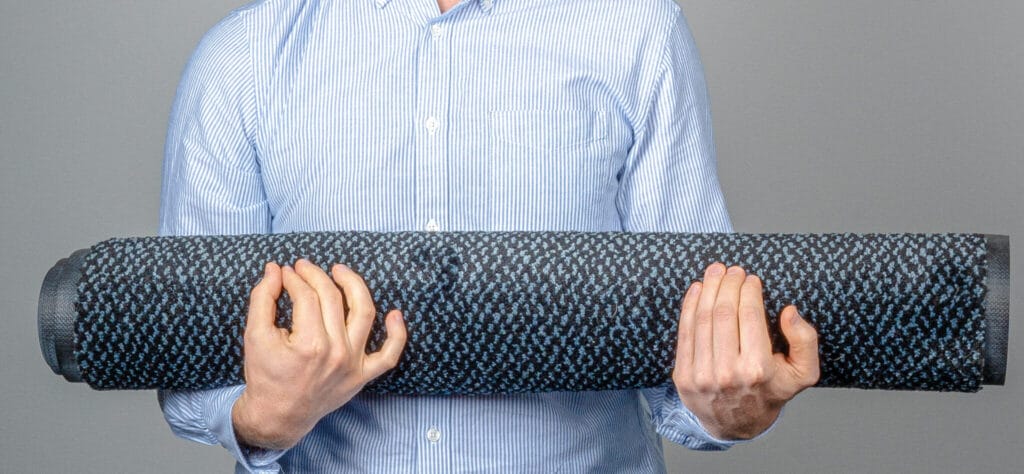
Mats improve safety, enhance comfort, protect floors, and more. Learn how mats benefit your workplace today!
Hygiene in food industry
In the highly regulated food manufacturing sector, textile hygiene plays a central role in compliance, operational efficiency, and brand reputation. Proper hygiene and contamination control through workwear significantly reduces risks, enhances productivity, and maintains consumer trust. The challenges you face, such as meeting strict regulatory standards and managing changing demands, require detailed attention and consistent adherence to hygiene practices.
Compliance with standards like HACCP, ISO 22000, and DIN 10524 is essential for ensuring food safety and quality. These standards require rigorous hygiene practices, including daily garment changes and professional laundering in high-risk areas. Regular microbiological testing, traceable garment handling, and certified laundry processes following EN 14065 guidelines are key to eliminating contamination risks and proving compliance during audits.
Consistently meeting these standards can be challenging. Industry studies indicate that employees often wash workwear at home or at temperatures insufficient for effective hygiene, unintentionally increasing contamination risks. Professional textile management offers documented, clear processes and digital traceability solutions, ensuring reliability and allowing your teams to concentrate on core operations while maintaining safety and compliance.
Discover industry best practices & insights
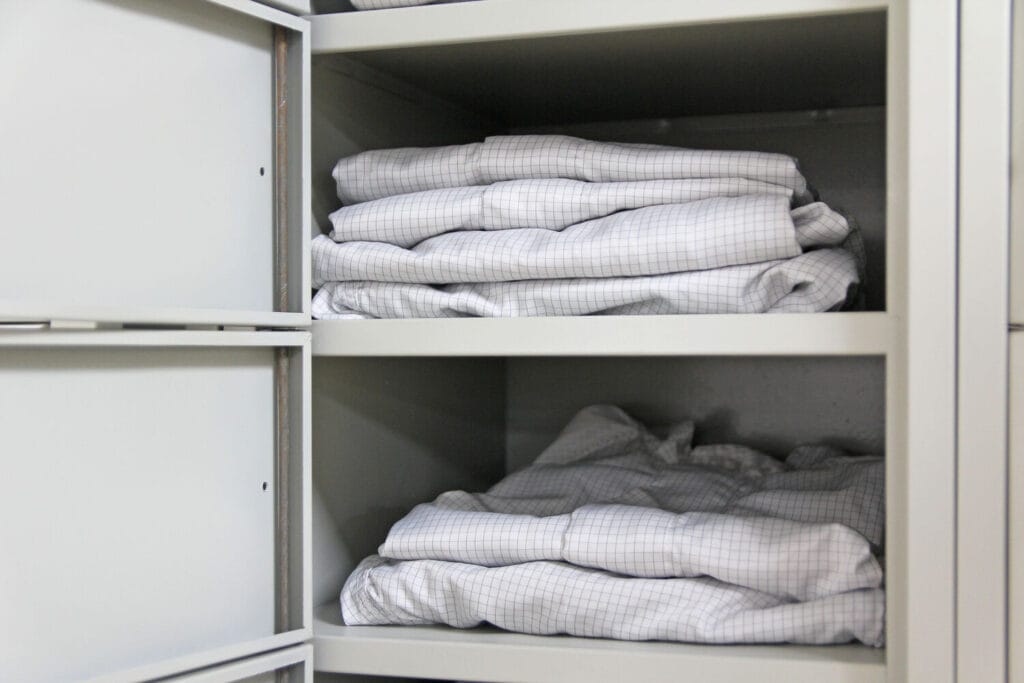
A practical guide on changing room design for food production, based on the best practices and examples from the industry.
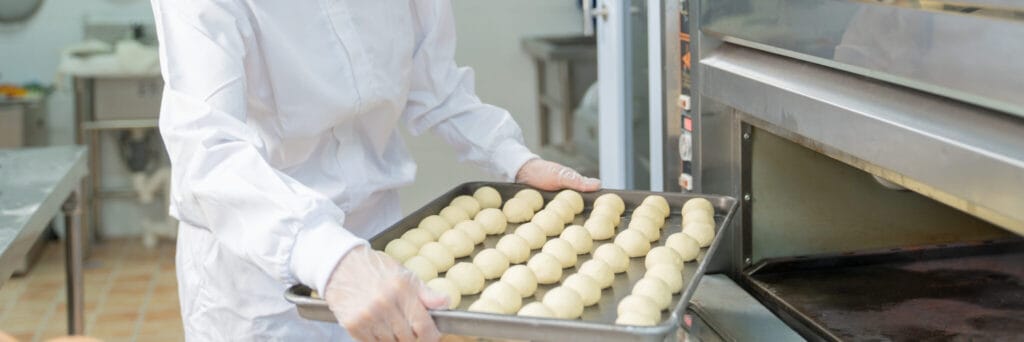
Enjoy contamination-free workwear in the food industry. We have it ready for you at all times, and take care of laundry and delivery.
Hygiene in pharma industry
In the pharmaceutical industry, hygiene is critical for maintaining product integrity, patient safety, and operational compliance. The greatest contamination risks often arise from personnel, as humans naturally shed particles and microbes, making stringent hygiene protocols and effective cleanroom garments essential for contamination control.
Pharmaceutical textiles must be designed and maintained to minimise contamination risks. Garments used in controlled environments should undergo rigorous, validated laundering and sterilisation processes that adhere to international standards, such as EU GMP Annex 1 and ISO 14644, to ensure optimal protection of both personnel and products.
Implementing robust lifecycle management systems for garments, including regular inspection, controlled laundering, and timely replacements, is crucial. Digital tracking technologies, such as RFID, can significantly enhance transparency, improve audit readiness, and ensure consistent garment hygiene.
Explore expert insights
Best practices in cleanroom compliance

Manas Kumar and Swapnil Pawar share how the right cleanroom fabrics and design of garments help pharma companies stay compliant.

Manas Kumar from Lindström shares how smart garment choices and process-driven solutions simplify GMP compliance and contamination control.
Hygiene in healthcare industry
In the healthcare sector, hygiene plays a crucial role in patient safety, infection prevention, and operational effectiveness. Executives and quality managers regularly face the challenge of maintaining strict hygiene standards due to changing regulations, increasing patient expectations, and constant contamination risks.
Effective hygiene practices in healthcare textiles significantly reduce the risk of healthcare-associated infections (HAIs), which is a major concern for hospitals, clinics, and care facilities. Healthcare professionals need to carefully select and handle garments and linens, ensuring rigorous washing and disinfection processes. Each of these steps directly affects patient safety and the overall reputation of the healthcare provider.
Contamination can easily occur if textiles are not managed correctly. Garments and linens can carry pathogens, threatening infection prevention measures. Therefore, clear guidelines, continuous staff training, and regular compliance audits are essential for maintaining textile hygiene.
Effective textile hygiene practices

Beyond hygiene, healthcare linen play a crucial role in maintaining patient comfort and dignity. Learn more about it!

Healthcare uniforms play a critical role in the medical field, serving as a form of identification but also as a means of promoting hygiene.

Home laundering has some serious risks. Learn how to maintain hygienic healthcare uniforms, and why renting textiles is a smart choice.

Lindström’s Aniruddha Banerjee opens up moments of hand hygiene and explains why it is worth spending a few minutes on.

What is the difference between home laundering and commercial laundering – and why should we all be interested in this?
Insights from Professor Dr. Katie Laird
